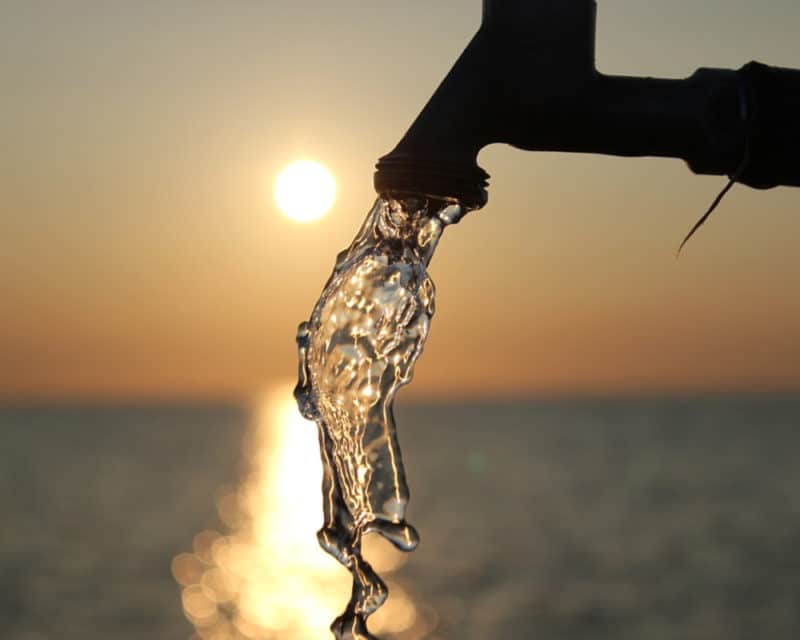Water keeps your body hydrated and healthy. It is one of the most common liquids all over the world, but did you know there are several different kinds of water types? Having tap water is not always safe since it can be contaminated with harmful toxins and chemicals. It is important to make sure you are drinking the tap water that is best for your health, and there are many ways of checking if that’s the case.
1. Get A Water Consultation

Many companies offer water checkups to those who want to know more about what’s in their drinking water. A specialist will come and test your water for harmful chemicals, microbial contamination, and any other health hazards that can be found there.
Some of the more common problems include hard, cloudy, and chlorine or sulfur-tainted water. The kind of issue you might have can depend on where you live, for example, Salt Lake City has a lot of minerals that can get in their water supply due to the surrounding mountain range while New York City has a naturally soft mineral palette. Some companies offer free virtual consultations, which can go a long way in determining what steps you need to take to make your water healthier.
2. Activate The Senses
When you are checking the water, use your senses to make sure it is safe. If there is a smell or it seems cloudy, don’t drink the water. If the water tastes metallic or has an odd colour, these are also signs that something is wrong.
Sometimes the colour of the water is indicative of the type of contaminants that are there. A rusty colour can happen when you have sulfurous water, which can release hydrogen sulfide into the water supply. Other times, it might just be your pipes that need some work. A common piping material used in older homes is copper, and this can give water a metallic taste.
If your water smells funny, especially like chlorine, this can be a sign of microbial contamination. Whenever you notice that your tap water doesn’t come out as a clear, tasteless, odourless liquid, it’s safe to assume there’s something you need to do about it.
3. Check The Water Pressure
If there is low water pressure coming from your faucet, it can result in contaminated water because the flow isn’t strong enough to clean it.
Low water pressure is a sign that you have a number of different problems with your pipes, including corrosion or rust build-up. Sometimes, low water pressure can just mean that you live in a high-level apartment building and the water needs to be drawn from a distant source. It can also be a result of your water flow regulator being clogged with sediment and sulfur buildup. Check with a professional to make sure your home’s water supply is free of debris and other contaminants before drinking it.
A good idea would be to check your drains too, some people think that if their water is clean then the drain must be too, but it’s important to make sure. If you notice that there’s a lot more build-up in them than there should be, or if they get clogged often, you might want to contact the professionals.
4. Do A Home Test Kit
If you think your water is contaminated but don’t know for sure, there’s an easy way to find it out without having to pay someone to come and test it for you – do a home test kit.
These are usually inexpensive and are available at most hardware stores. You will get a number of bottles, each with a chemical solution inside. Simply put some tap water in the bottle, shake it up, wait for 30 seconds or so, and check the colour. Different chemicals give different colours based on their toxicity levels. Compare the results with the instruction manual and you will know if your water needs to be purified.
To reliably remove toxic chemicals, you might need a water filtration pitcher or a reverse osmosis system. If you think this sounds like something you’ll need, filter Smart has written a whole great article about when you should get reverse osmosis systems that you should check out.
5. Ask Around

If you need to know if your water is safe for drinking, asking around is a good idea. Talk to the other people who live in your building or neighbourhood and see what they think about their water supply.
You should also check with your neighbours across the street, as any time there’s construction done on a home it can result in contaminants getting into the water supply. If they are also complaining about their water, then chances are there’s a problem that needs to be addressed.
The best way to make sure you are drinking the cleanest water possible is to do your research before it comes time for you to turn on the faucet. Whether it’s by consulting with experts, doing your own testing, or learning about what other people in your community say, this will help you find out if there’s anything wrong with the water coming into your home. If you do discover that your tap water is contaminated, or if you just want to ensure that it’s safe for drinking, then you should get in touch with a professional who can help you find the best possible solution.

